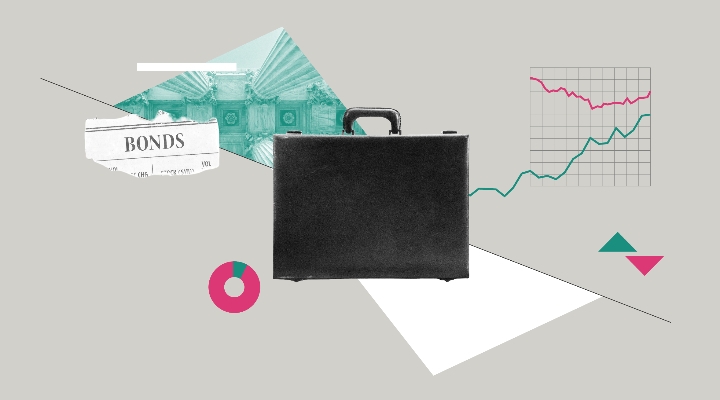
I write far more about stocks. It is not that I dislike bonds – quite the contrary. Back when I worked as a mutual fund analyst (exchange-traded funds had yet to be invented), I preferred researching fixed income funds to their equity rivals. Stock fund managers told stories, but investment-grade bond funds were about math. They were tangible.
Unfortunately, the math in recent years has rarely been in their favour. To quote Jimmy McMillan, their rent has been too damn high. Owing to several factors, including discomfort with equities after the 2008 global financial crisis and the graying of America, bonds have become more popular than stocks. As a result, their yields have declined, making them significantly less attractive than equities.
Bond Yields vs Stock Dividend Yields
How should bond and stock prices be compared? Once upon a time, investors believed the dividend yield from stocks should exceed the yields from government bonds. Stocks were riskier, after all. From 1900 through 1960, that principle almost always applied. For the most part, 10-year Treasury notes paid 4%, while stock market dividends equalled 6%. The latter figure fluctuated widely, owing to changes in both the numerator (dividends declared) and denominator (stock market prices). But they were reliably above Treasury yields.
Historically, that relationship had made sense, because the stock market was a mess.
Despite the country’s impressive growth rate, US stock market returns had barely surpassed those of bonds from George Washington's presidency through World War Two – thanks to the combination of poor corporate governance and incoherent government policies. When companies were as likely to defraud their shareholders as compensate them, or abruptly vanish through bankruptcies, they needed to offer fat ongoing payments to justify risk.
The Markets Have Evolved!
Once the US stock market reached adulthood, that metric was far too conservative. On average, companies paid only half their earnings as dividends, reinvesting the other half in their businesses. Thus, equity shareholders received: 1) high current yields from 2) well-regulated companies that operated in 3) a stable and healthy economy. Those businesses were also 4) growing rapidly because 5) they had plowed much of their profits back into their operations, which permitted them to 6) continually increase their dividends and/or repurchase their shares.
Nice work if you can get it! But for a long while you could not.
From January 1962 until December 2008, 10-year Treasury yields always exceeded stock-dividend yields. The global financial crisis ended that streak, as the implosion of the nation's banking system spurred many investors to swap their equity shares for bonds. That made sense, as the 2008 calamity was real and deeply threatening. What has not made sense is that, through much of the ensuing 15 years, stock dividend yields have hovered near Treasury payouts.
Exhibit A: Bond Yields Versus Dividend Yields
:quality(80)/cloudfront-us-east-1.images.arcpublishing.com/morningstar/RMFACVIGGVBMHNDBYKHLUCAXRA.png)
(Yield % for 10-year Treasury notes and the dividend yield % for S&P 500 stocks, January 1962-January 2024)
Bond Yields vs Stock Earnings Yields
My point in pictures: bonds have been unattractive! Recently, though, their relationship with equities has shifted again: Treasury yields have soared, while dividend yields have flatlined.
To be sure, that change alone does not make bonds attractive. Paying more income than stock dividends is a starting point for evaluating bonds, not an ending point. A fairer test is how Treasury yields compare with the stock market’s earnings yield – that is, the aggregate earnings of US firms divided by the total value of their shares.
As a rough cut, those amounts should be similar. Treasuries possess the advantage of guaranteed yields: nobody will take them away (whether those distributions over time become severely eroded by inflation is another matter). However, fixed payments are a double-edged sword. Barring an unusually-bad economy, companies will inexorably increase their annual earnings, while Treasury yields will remain constant. What started as an even exchange will tilt in equities' favour.
Overall, that makes for a fair trade. If bond yields match the earnings yield generated by equities, then bonds provide an equivalent underlying rate with substantially greater safety, at the cost of growth potential. Win some, lose some. Indeed, that is how investors have generally valued the two asset classes during the modern era, until the post-2008 anomaly.
Exhibit B: Bond Yields Versus Earnings Yields
:quality(80)/cloudfront-us-east-1.images.arcpublishing.com/morningstar/LCRR6QILHJE7DEBV63QKHYQ5IE.png)
(Yield % on 10-year Treasury notes and the earnings yield % for S&P 500 stocks, from January 1962-January 2024)
Have a Think About Absolute Yields
This second chart suggests that, after being overvalued for 15 years, bonds are now reasonably appraised. Not quite.
It is true that the relative yield on 10-year Treasuries (and thus other intermediate- to long-term investment-grade bonds, as the yield curve is almost flat) has reverted to its historical norm. By and large, modern investors have shared my view Treasury yields should resemble the stock market’s earnings yield. And that is currently how bonds are valued.
Unfortunately, absolute yield is also important, and that is disappointingly low.
In September 1980, the 10-year Treasury yield also slightly outstripped the earnings yield on equities, as is now the case. But the two circumstances differ greatly because in the autumn of 1980 Treasuries paid 11.57%! That amount supplied powerful inflation protection. If annual inflation averaged 6%, Treasury investors would still book a handsome real profit. Even a 9% rate would be acceptable.
Not so today. For Treasury note owners to earn a meaningful after-inflation return, consumer prices must be almost stagnant. The same precept does not apply to equities, because their earnings increase. The bottom line: whereas in 1980 both asset classes could tolerate moderately-high future inflation, today, only equities enjoy that possibility. With 4% yields, bonds stand no chance.
Conclusion: Which is Better? Equities or Bonds?
Inevitably, this article contains an embedded macroeconomic assumption. It presumes corporate earnings will continue to increase, rather than languish as predicted by bond fund manager Bill Gross' famous (and inaccurate) 2009 brief On the "Course" to a New Normal. Should corporate profitability stagnate, bonds would become more attractive. I doubt that they would outgain stocks over time, but the return gap could be surprisingly narrow.
Under the likeliest economic conditions, though, my long-standing opinion persists: stocks remain the better investment. I would write that even if Treasury yields reached 5%. But I confess 6% would be tempting.
John Rekenthaler is vice president for research services at Morningstar





























